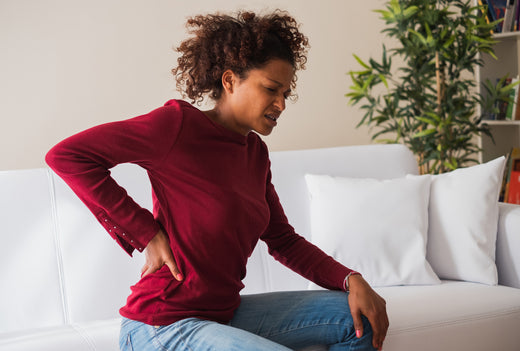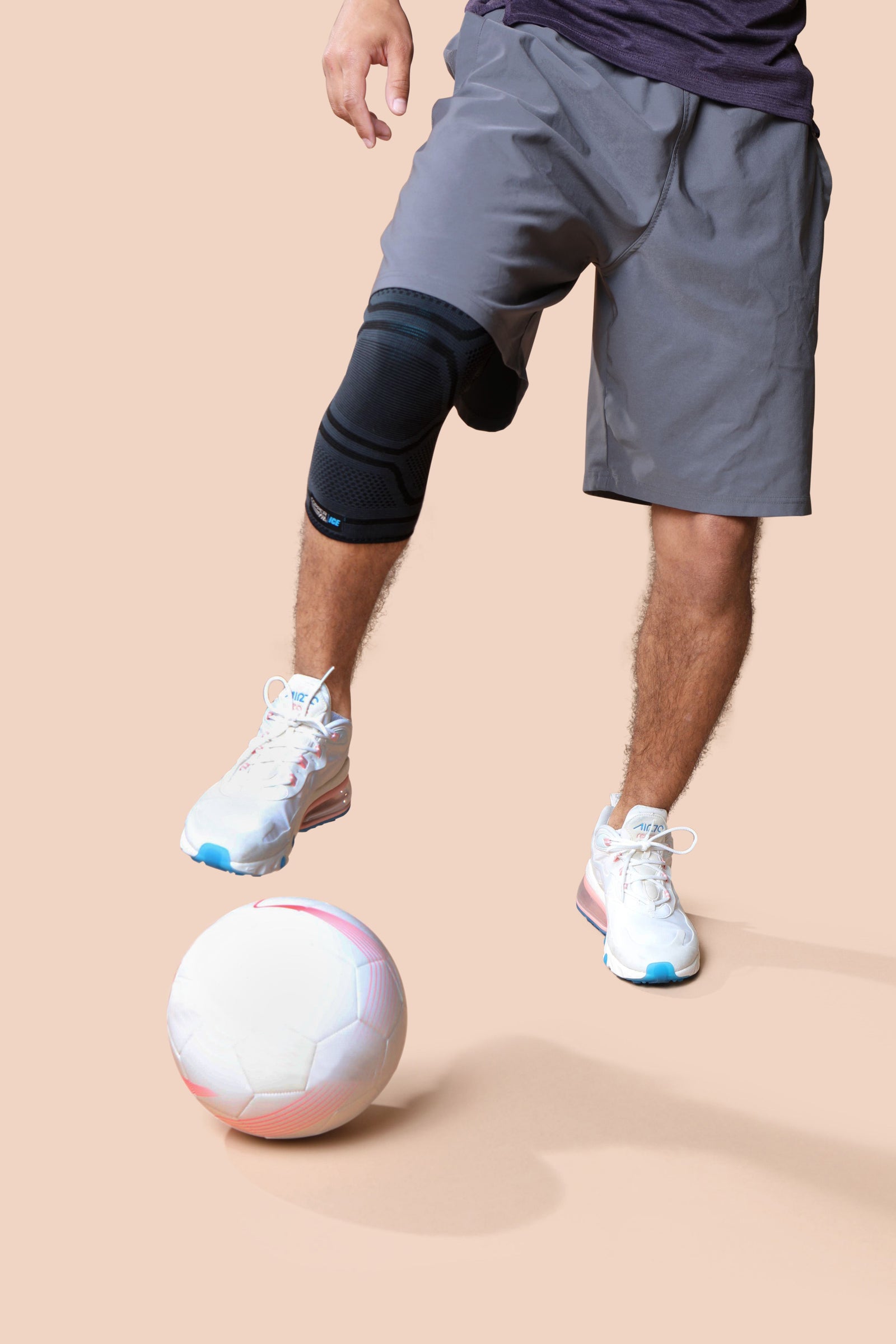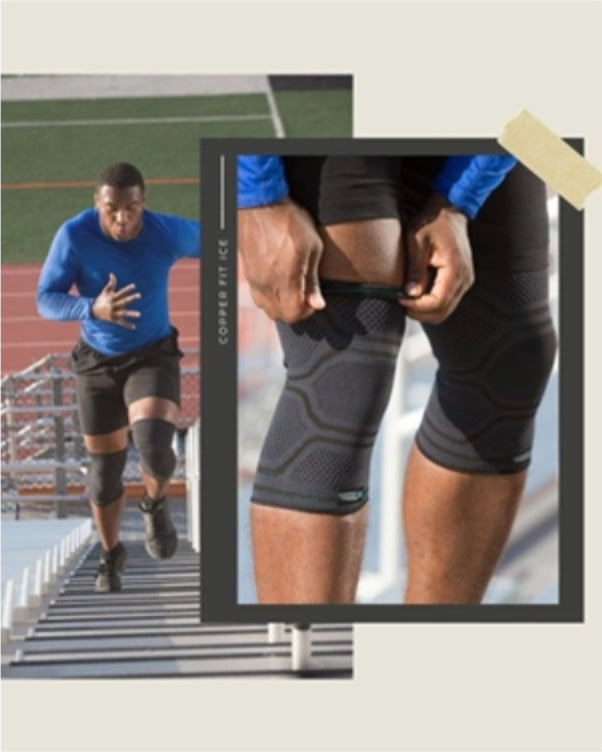
Back discomfort can feel like a restricting force, inhibiting us from living an active life. Whether you're an athlete hitting the track or someone simply striving to make the most of daily activities, the prevalence of lower back discomfort is hard to ignore.
This is a common hurdle that people across various walks of life grapple with and may become particularly noticeable when sitting. As we strive towards wellness, understanding the root causes of this discomfort is key. It's the first step towards maintaining your back's health and improving the quality of your life.
So roll back your shoulders, sit back, and let’s get to the bottom of what may be causing your back discomfort — and how to manage it.
What Can Cause Lower Back Discomfort When Sitting?
Transitioning from an active lifestyle to extended periods of sitting can lead to discomfort in the lower back. The causes can be multi-faceted, each playing a role in the way your back responds.
Let’s dive deeper into some of the common reasons your back might hurt, helping you better find a route towards relief.
1. Poor Sitting Posture
Have you ever caught yourself slouching over your laptop, hunching over your phone, or realizing that the angle of your neck while scrolling through the screen is not ideal? While seemingly small, these subtle, daily habits can impose significant stress on your back, specifically the lumbar spine.
Slouching affects the back muscles and ligaments, causing them to stretch abnormally, leading to discomfort over time. When you don't sit upright, you're forcing your body to compensate by straining the muscles in your lower back.
This undue strain often results in that pesky dull ache that nags at you after a long, tiresome day hunched over your desk.
2. Driving
Many of us spend a considerable part of our day in a vehicle, commuting to work, running errands, or traveling. However, the position we assume while driving, particularly over long periods, can have a detrimental impact on our muscles and spine over time.
The vibrational forces from driving, coupled with poor driving posture, can lead to stress in the lumbar region, causing discomfort and tension. Think of those long hours stuck in traffic, the jolts from uneven roads, or the pressure from the constant use of pedals. These all contribute to the potential lower back pain we feel.
3. Long Periods of Inactivity
If your lower back hurts throughout the day, too much time spent sitting could bear the blame.
Sitting for extended periods of time, whether at work, at home, or during travel, can escalate back problems. Our bodies are designed for movement, and being stationary for long periods leads to stiffness and tension in our back muscles, leading to discomfort.
It's essential to break up these periods of stillness with movement, no matter how small or short. Doing so keeps our back muscles engaged and healthy and prevents them from falling into a state of constant strain.
4. Lack of Physical Activity
Our body's strength, flexibility, and general physical fitness play a significant role in our back health. A strong abdominal core and a sturdy upper body provide crucial support to our spine, reducing the likelihood of lower back discomfort.
Alternatively, a sedentary lifestyle or a lack of regular physical activity can weaken these muscles over time. This lack of muscle strength leaves your back susceptible to strain, tension, and discomfort, putting pressure on the sciatic nerve and the lumbar spine.
5. A Weak Core
Lack of core strength can significantly contribute to lower back discomfort. Your core muscles — including your abdominal muscles, obliques, and even glutes — play a critical role in stabilizing and supporting your lower back.
A weak core can put extra pressure on your lower back, leading to discomfort, especially when sitting for long periods. Focusing on exercises that strengthen these core muscles is crucial in preventing lower back pain.
6. Past Injuries
Previous injuries, such as those acquired from a car accident or a severe muscle strain, may have lingering effects that contribute to chronic lower back discomfort.
These past traumas, if not adequately addressed and rehabilitated, can cause persistent issues that become increasingly noticeable, particularly when seated for extended periods.
7. Certain Health Conditions
Some health conditions, particularly those that directly affect the spinal cord, can cause discomfort in the lower back when sitting. Conditions like sciatica, degenerative disc disease, and spinal stenosis are common causes of lower back pain. It's always advisable to rule out these or any other underlying conditions with a healthcare professional if you're experiencing persistent discomfort.
Understanding these possible causes is just the beginning of the journey towards better back health. Knowledge is power — knowing these causes equips you to take proactive steps to maintain your back's health and overall wellness.
Keep in mind that it's always important to seek medical advice if your discomfort is persistent or severe, as it may indicate a more serious underlying condition. Remember, your wellness journey is just that, a journey. It's important to move at a comfortable pace, listening to your body along the way.
Ways To Ease Lower Back Discomfort When Sitting
Acknowledging the reasons behind lower back discomfort is pivotal, but acting on this knowledge is where the real empowerment lies. Once you know what is causing your back pain, you can take steps to address it.
Adopting Ergonomic Practices
Think about your workspace. Are you hunched over a low table, or are you sitting upright at an ergonomically designed desk? Your sitting position plays a vital role in maintaining the health of your back.
A chair with good lumbar support, a standing desk for intermittent use, or even simply maintaining a 90-degree angle between your thighs and back can make a world of difference. If replacing furniture isn't feasible, consider using a cushion for added lumbar support or raising your laptop with books to maintain a neutral neck position.
Improve Posture
Improving your posture isn't merely about sitting upright — it's also about building core strength. This involves being mindful of your body alignment, keeping your shoulders relaxed, and engaging your core muscles while sitting.
Consider posture-supporting exercises like planks or yoga poses, which can aid in building core strength and help improve your posture. At the same time, our Copper Fit Posture Support can act as a subtle, yet consistent reminder to keep your neck, shoulder, and back aligned.
Designed with ergonomic support, it aims to soothe discomfort caused by poor posture or extended periods of slouching.
Take Breaks Often
Whether you're driving, working, or even unwinding with a movie, try to break up long periods of sitting. Stand, stretch, take a short walk around your workspace — small changes can bring significant benefits. These simple actions can help maintain healthy blood flow and alleviate any building tension.
Stretch
Incorporating stretching into your daily routine can play a key role in relieving back discomfort. Stretches targeting the back muscles, hamstrings, and hips can help keep your body flexible and support good posture, potentially reducing discomfort.
Stay Active
Regular physical activity is crucial. The type of activity doesn't matter as much as the consistency — it could be anything from a morning jog to an evening yoga class. Listen to your body, and engage in what feels right for you.
Physical Therapy
Physical therapists can provide personalized exercises and treatment options to help manage lower back discomfort. They can guide you in strengthening the necessary muscles, promoting a healthier back.
Supportive Apparel
Our Copper Fit Back Supports, such as the adjustable Advanced Back Pro Support Belt or our Rapid Relief Back Support, are designed with your comfort in mind.
The Advanced Back Pro offers gentle compression with four built-in stabilizing rods designed to soothe the lumbar region, while the Rapid Relief Wrap has dual options for heat or cold therapy, both of which can help soothe back discomfort depending on the cause.
With the ability to reduce odors thanks to copper infusion, our compression supports allow for a full range of motion while supporting the lower back muscles. You can wear them while working at your desk, during long drives, or any time you're feeling tense to support healthy blood flow, soothe tension, and promote a soothing release.
Seek Medical Attention When Necessary
While over-the-counter medications such as NSAIDs, acetaminophen, or ibuprofen may be considered to manage discomfort, many prefer more natural forms of support that have less risk of side effects. But, it's essential to seek medical advice if the discomfort is persistent or severe or if strategies to manage back discomfort at home are not working.
Remember, orthopedic and physical medicine professionals are there to provide help and insight, ensuring you make informed decisions for your back health.
The Bottom Line
Addressing lower back discomfort involves a multi-pronged approach — from the physical space you inhabit to the lifestyle choices you make. It's about choosing to stay active, adopting better postures, embracing supportive technology, and seeking help when needed.
Holistic wellness involves more than just back health. It requires consistent care and nurturing of your entire lifestyle. Each choice you make, each habit you form, contributes to your overall well-being and a healthier, stronger back.
Embark on your wellness journey with Copper Fit as a trusted companion. Our supportive products are designed to support circulation, soothe tension, and offer comfort, making your journey more manageable. Here's to a healthier you — strong, brave, and active.
Sources:
3 surprising risks of poor posture | Harvard Health
Lumbar Spine: What It Is, Anatomy & Disorders | Cleveland Clinic.
Effects of driving on low back pain | PMC
Posture Strengthening Exercises | Ergonomics
Here’s How to Choose Between Using Ice or Heat for Pain | Cleveland Clinic





